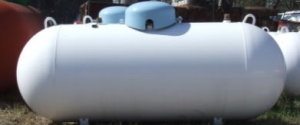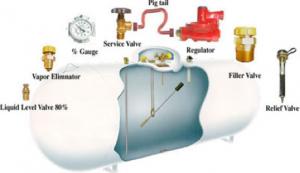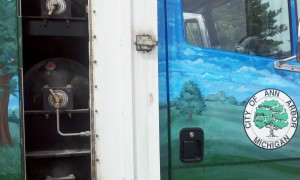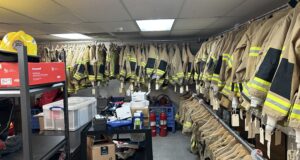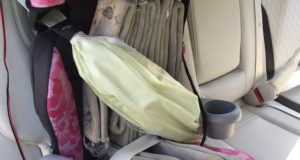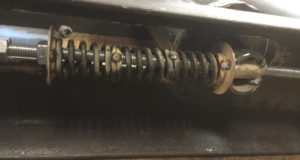By: Charlie Hillman
If your jurisdiction contains residential structures serviced by propane tanks; controlling this hazard should be a tactical priority.
Here is a picture of a typical residential propane tank that we can encounter in a rural setting:
This is a 250 gallon propane tank that provides heating and cooking fuel. Propane is used in the rural setting rather than natural gas in most cases. Natural gas is normally delivered via underground lines, and the cost to run miles of natural gas line makes it cost prohibitive in rural settings. Thus, most rural homes are serviced by a propane tank that is on site. The propane is delivered by truck to the tank when the consumer is in need of fuel. Be cautious of appliances that were designed to use natural gas and are being fed by propane. Propane has a higher amount of BTU’s per cubic foot; so if used in an appliance that was designed for natural gas it can have disastrous consequences. These appliances have smaller orifices for propane and larger orifices for natural gas.
“LIKE” FIRST DUE TACKLE ON FACEBOOK
As we all know when one of these tanks becomes exposed to excessive heat a BLEVE (Boiling Liquid Expanding Vapor Explosion) can occur. To prevent this from occurring use simple tactics to mitigate this hazard.
- If the tank becomes exposed to excessive heat, cool the tank from a safe distance. This tactic can be accomplished by an unmanned ground monitor for added safety.
- To control a tank in which the relief valve has opened and fire is actively burning use the following technique: two hoselines manned with the appropriate number of firefighters should approach the tank in a coordinated effort. Start by directing a straight stream at the tank to begin the cooling process. Advance the hoselines together as one unit and gradually move from a straight stream to a narrow fog pattern to a wide fog pattern. As the wide fog pattern is being applied to the tank, both teams should be close to the tank and one person should control the tank by closing the valve. Retreat together as one unit gradually moving from a wide fog pattern to a narrow fog and then back to a straight stream. Cool the tank for an extended period of time.
- Avoid operating a hoseline in the direct vicinity of a propane tank that is not being cooled with water. Especially avoid operating in the direct path of the ends of the tank. If a catastrophic failure of the tank should occur the ends of the tank will be the first failure point and will project like missiles. However, that being said, if a tank catastrophically fails fragments of the tank will be launched in all directions. A minimum working distance from the tank should be approximately 300 feet and an evacuation distance (for non-emergency personnel) should be approximately 1600 feet.
- Direct stream placement to the safety valves should be avoided to prevent the valves from icing over.
- If the relief valve opens up (characterized by a loud whistling sound) leave the area immediately. The escaping propane will ignite and act like a flamethrower until the pressure is relieved inside of the tank. A tank that is showing signs of discoloration should also prompt immediate evacuation of the area, as this could be an indicator of tank failure/explosion.
- Continue to apply large volumes of water to the tank after the fire has been extinguished. This will ensure that the contents of the tank are completely cooled and the tank is safe.
Remember, these tanks (propane or compressed natural gas) can also be found on alternative fuel vehicles.
Pass it on!
 First Due Tackle Pass It On – Firefighter, Rescue & Extrication Training
First Due Tackle Pass It On – Firefighter, Rescue & Extrication Training
